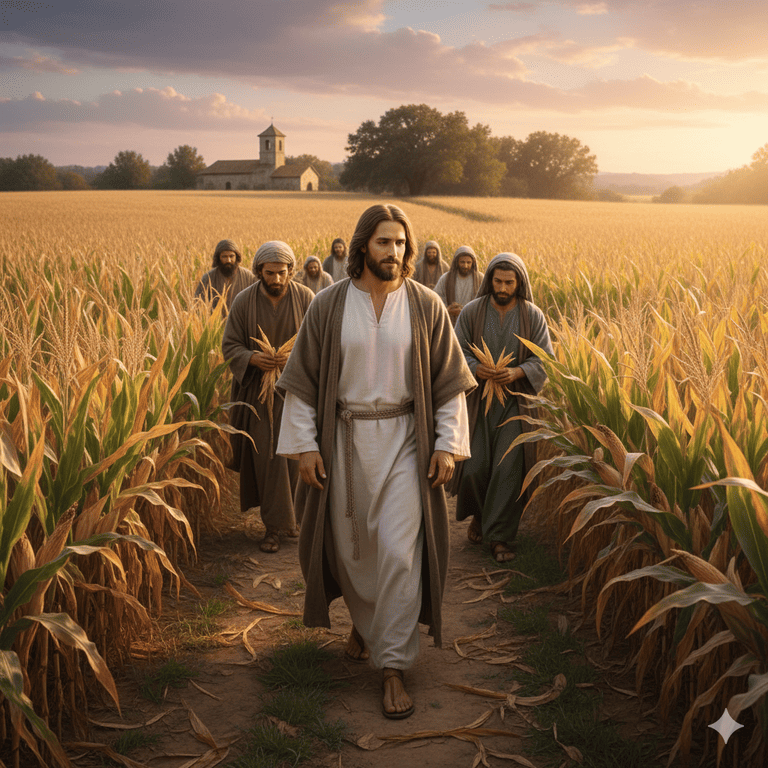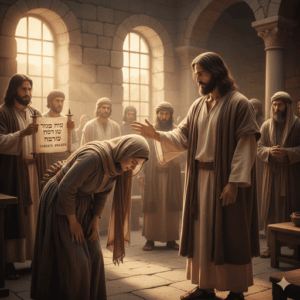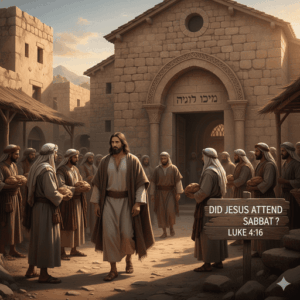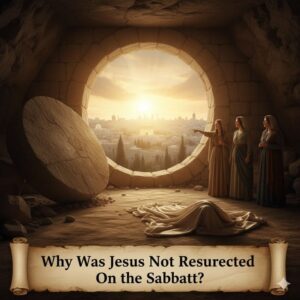The account of Jesus in the cornfield on the Sabbath appears in Matthew, Mark, and Luke, where His hungry disciples pick and eat grain, prompting the Pharisees to accuse them of doing unlawful work on the Sabbath.
In response, Jesus defends His disciples by emphasizing that the Sabbath was created to benefit people, not to burden them, and He cites scriptural examples like David eating the consecrated bread and priests serving in the Temple to illustrate that compassion and human need take priority over rigid rule-keeping, aligning with the Sabbath’s true purpose of rest and refreshment for humanity.
Biblical Passage Overview
The event commonly known as “Jesus in the cornfield on the Sabbath” is recorded in three places: Mark 2:23-28, Matthew 12:1-8, and Luke 6:1-5. The story describes Jesus and His disciples walking through the fields on the Sabbath. The disciples, hungry, begin picking some heads of grain, rubbing them in their hands, and eating the kernels.
Immediately, some Pharisees confront Jesus, accusing His disciples of breaking Sabbath law by “harvesting” grain, which was technically considered work and therefore prohibited.
Jesus responds by referring to a story about King David, who ate consecrated bread when hungry, which was lawful only for priests. Jesus concludes by declaring, “The Sabbath was made for man, not man for the Sabbath. So the Son of Man is Lord even of the Sabbath” (Mark 2:27-28).
Historical and Cultural Context of the Sabbath
Based on the fourth commandment given to Moses (Exodus 20:8-11), the Sabbath is a day dedicated to rest and holy observance, beginning at sundown on Friday and ending at sundown on Saturday.
During Jesus’ time, the Pharisees were especially intent on preserving the sanctity of the Sabbath, elaborating detailed regulations about what did and did not constitute work. Even actions as simple as plucking and rubbing grain were interpreted as harvesting and threshing—activities explicitly prohibited.
Jesus’ Actions Explained
Jesus’ disciples were not stealing; the law (Deuteronomy 23:25) expressly permitted people to pick grain by hand as they passed through a neighbor’s field. What made the difference here was the timing—it happened on the Sabbath.
By allowing His disciples to pick grain, Jesus challenged a legalistic interpretation of the Sabbath. His actions demonstrated a practical and compassionate approach to the law, affirming the importance of human need.
Jesus’ permissiveness wasn’t about disrespecting tradition but restoring its deeper purpose. The Sabbath was meant as a blessing, a day of rest and refreshment, not an oppressive burden.
In this event, Jesus made it clear that God’s law should serve the well-being of people, not restrict necessary acts of mercy or compassion. The hunger of the disciples mattered, and meeting that need did not, in Jesus’ eyes, violate the principle behind Sabbath rest.
The Pharisees’ Objection
The Pharisees’ objection in this story reveals both their devotion and their tendency to elevate tradition above compassion. Watching Jesus’ every move, they asked, “Why are you doing what is not lawful on the Sabbath?” (Luke 6:2). Their focus was on strict adherence to rules, not the disciples’ real need.
Their response showed little flexibility or understanding for the intent and spirit behind the Sabbath law. For the Pharisees, enforcing the rules was paramount, overshadowing the human dimension at the heart of the Sabbath.
Jesus’ Response and Its Significance
Jesus’ response is masterful and deeply theological. He cites the example of David, who ate showbread reserved for priests when he and his men were hungry (1 Samuel 21:1-6). In referencing David, a revered figure, Jesus points out that compassion and necessity outweigh ritual regulations.
He then delivers one of His most memorable sayings: “The Sabbath was made for man, not man for the Sabbath” (Mark 2:27). This shifts the perspective from legalistic observance to grasping the heart behind Sabbath law. Sabbath was instituted for the benefit of humanity: for rest, renewal, and joy.
Finally, Jesus states, “The Son of Man is Lord even of the Sabbath.” With this, He claims authority not only to interpret the law but to embody its fulfillment. Jesus did not abolish the law but sought to restore it to its intended purpose—serving people, glorifying God, and promoting life.
Through this interchange, Jesus teaches the value of mercy over mere ritual, the supremacy of compassion, and the risk of losing sight of God’s intentions by adhering too rigidly to human tradition.
Conclusion and Personal Reflection
The story of Jesus in the cornfield on the Sabbath continues to resonate because it presents a powerful vision of faith that transcends legalism and honors the spirit behind God’s commands.
In responding to accusations from the Pharisees, Jesus challenged the misuse of religious tradition and urged His followers to seek the heart of God: love, mercy, and compassion.
For anyone today exploring questions about Sabbath, obedience, or religious rules, this story is instructive. It reminds us that God’s commandments are gifts meant to promote human flourishing. When man-made traditions threaten to eclipse the needs of people or the intention of the law, Jesus calls us to realign with God’s loving purpose.
In summary, the story invites us to look past mere rule-following and instead cultivate a faith that places people’s genuine needs at the center, honors the true intention of religious observance, and ultimately follows Christ as the Lord of compassion and grace.
My Letter To A Sunday Keeper – Sabbath Documentary

The Days of Noah – Powerful Documentary (Video Format)

Bible Studies – Written Format







